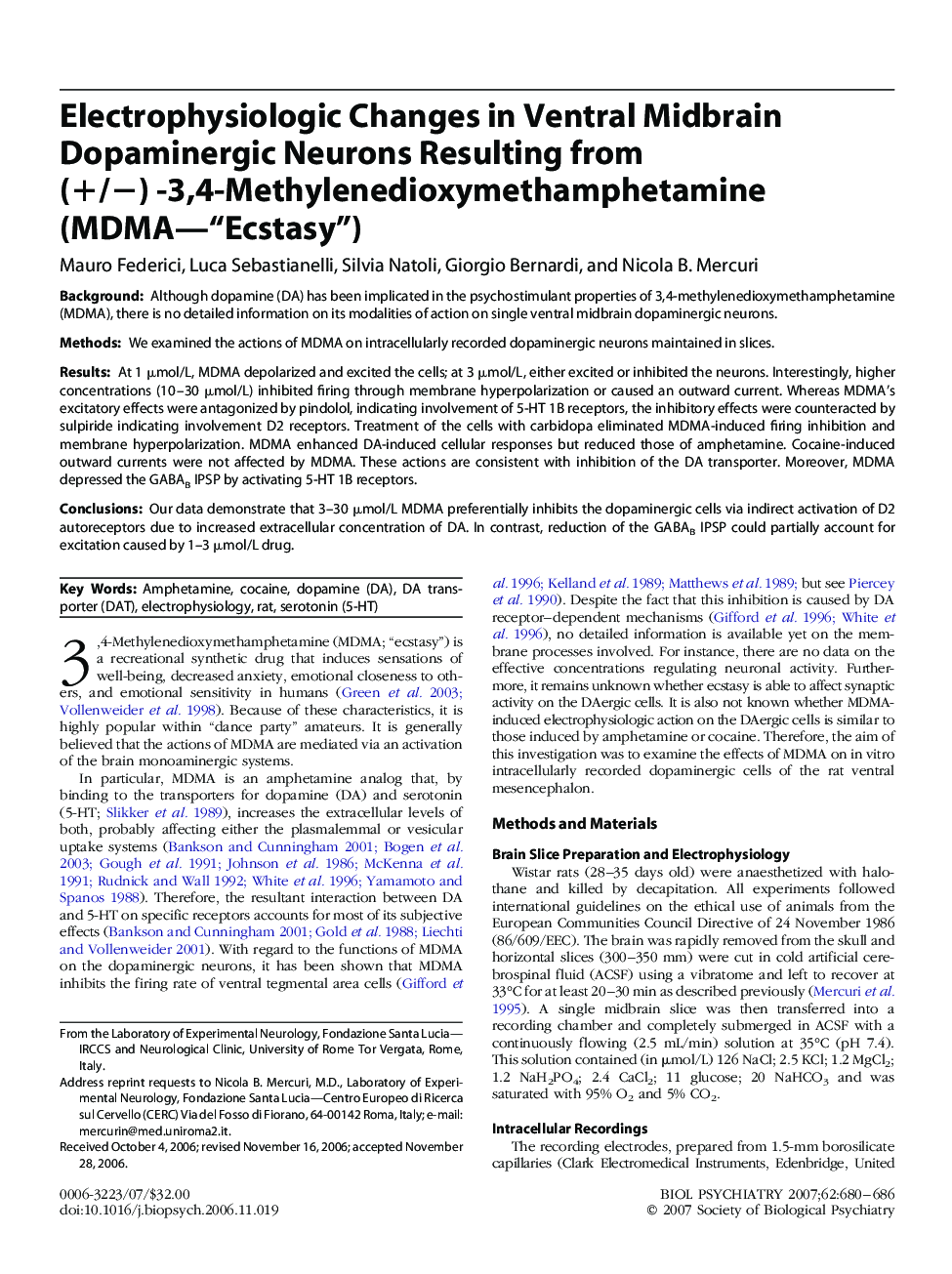| Article ID | Journal | Published Year | Pages | File Type |
|---|---|---|---|---|
| 4180692 | Biological Psychiatry | 2007 | 7 Pages |
BackgroundAlthough dopamine (DA) has been implicated in the psychostimulant properties of 3,4-methylenedioxymethamphetamine (MDMA), there is no detailed information on its modalities of action on single ventral midbrain dopaminergic neurons.MethodsWe examined the actions of MDMA on intracellularly recorded dopaminergic neurons maintained in slices.ResultsAt 1 μmol/L, MDMA depolarized and excited the cells; at 3 μmol/L, either excited or inhibited the neurons. Interestingly, higher concentrations (10–30 μmol/L) inhibited firing through membrane hyperpolarization or caused an outward current. Whereas MDMA’s excitatory effects were antagonized by pindolol, indicating involvement of 5-HT 1B receptors, the inhibitory effects were counteracted by sulpiride indicating involvement D2 receptors. Treatment of the cells with carbidopa eliminated MDMA-induced firing inhibition and membrane hyperpolarization. MDMA enhanced DA-induced cellular responses but reduced those of amphetamine. Cocaine-induced outward currents were not affected by MDMA. These actions are consistent with inhibition of the DA transporter. Moreover, MDMA depressed the GABAB IPSP by activating 5-HT 1B receptors.ConclusionsOur data demonstrate that 3–30 μmol/L MDMA preferentially inhibits the dopaminergic cells via indirect activation of D2 autoreceptors due to increased extracellular concentration of DA. In contrast, reduction of the GABAB IPSP could partially account for excitation caused by 1–3 μmol/L drug.
